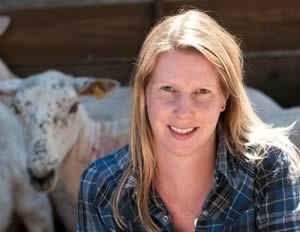2010-08-03
A new analysis of the direct costs of footrot in sheep shows that treatment and labour inputs alone are as much as £8.38/ewe.
Ruth Clements from FAI Farms
“Provided sheep producers take a long-term, combined approach to footrot problems there is no reason why significant improvements and cost savings cannot be made.”
 |
Speaking at NSA Sheep 2010 (Tuesday, August 3rd) the consultant vet to FAI Farms, Ruth Clements MRCVS, drew sheep producers’ attention to the obvious costs of the disease, but stressed that these were only the tip of a rather large iceberg.
“We have known for a long time that lame sheep are costly in terms of time and antibiotic treatment, but the indirect costs soon mount up too – making lameness a significant limiting factor on many flocks’ productivity and profitability,” she said.
Thanks to sponsorship from Intervet/Schering-Plough Animal Health, FAI Farms has gathered a year’s worth of footrot treatment data for their own flock of 1000 Coopworth ewes. The headline treatment and labour cost of £8.38/ewe is significant enough, but doesn’t include the knock-on financial penalties caused by the disease.
“Sheep that are lame are in pain, and this has all sorts of physiological effects. Immobile animals do not graze as effectively, which means growth rates in lambs and milk production in ewes will suffer. In addition, you have the risk of concurrent diseases such as flystrike. We have noticed a correlation between the occurrence of lameness and flystrike in our sheep, particularly in the flank region. We think that infected feet attract flies, and with increased time lying down these flies come into close contact with the flanks of the animals.”
To minimise the costs of lameness and its adverse effect on animal welfare, FAI Farms, based at Wytham near Oxford, is a year into a three-year programme assessing the effectiveness of a new footrot control protocol. “The new protocol is highly practical and the focus is on prevention,” Ruth Clements said.
“It involves culling persistent offenders, improved biosecurity and Footvax vaccination bi-annually. And a year in we are seeing significant improvements. Over the last 12 months we have seen a 90% reduction in lameness problems, so are delighted with the potential direct cost savings. But we are also saving all the hidden knock-on disease costs too, so the financial benefits over the longer-term will really be quite significant,” she said.
 Producers Urged to Protect Sheep from Dog Parasites Producers Urged to Protect Sheep from Dog Parasites
 Baycox Coccidiocide Now in One Multi-Species Presentation Baycox Coccidiocide Now in One Multi-Species Presentation
 Take Care with Late Silage to Minimise Listeriosis Take Care with Late Silage to Minimise Listeriosis
|



